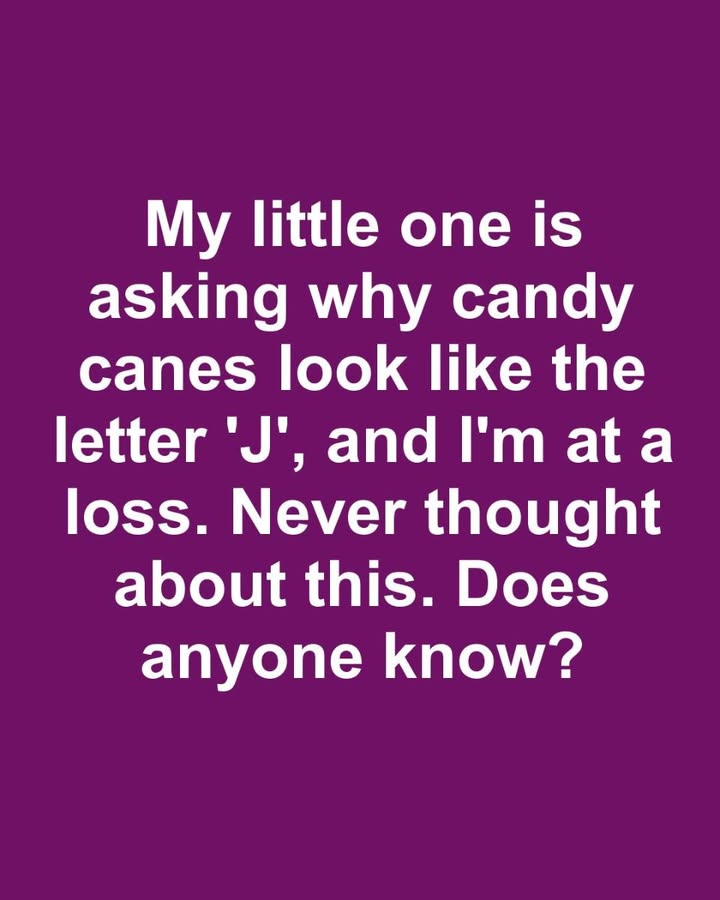Had no clue about this!
McKayla Davis
Contributing Writer
Like to see more from Tips for the Home
Print this recipe
As the holiday season approaches, many of us find ourselves surrounded by the festive sights and sounds that define this time of year. Among these, the candy cane stands out as an iconic symbol of Christmas. Its distinctive shape, reminiscent of the letter ‘J’, often prompts curious questions from children, like ‘Why does it look like that?’ As parents, we might find ourselves stumped by this seemingly simple inquiry. The candy cane’s shape is not just a random design but is steeped in history, symbolism, and a bit of mystery. Let’s explore the origins and meanings behind this beloved holiday treat.
Historical Origins of the Candy Cane
The candy cane’s history dates back several centuries. It is believed to have originated in the 17th century in Europe. Legend has it that the first candy canes were straight white sugar sticks. Around 1670, a choirmaster at the Cologne Cathedral in Germany bent the sugar sticks into the shape of a shepherd’s crook to keep children quiet during long Christmas services. This shape was not only practical but also symbolic, representing the shepherds who visited the baby Jesus. Over time, the candy cane evolved, gaining its distinctive red stripes and peppermint flavor, becoming a staple of Christmas celebrations.
Symbolism and Cultural Significance of the Candy Cane
The candy cane is rich in symbolism and cultural significance. Its white color is often said to represent purity, while the red stripes symbolize the blood of Christ. The peppermint flavor is thought to be reminiscent of hyssop, an herb mentioned in the Bible for its purifying properties. Beyond religious symbolism, the candy cane has become a universal symbol of the holiday spirit, representing joy, goodwill, and the warmth of the season. Its presence in holiday decorations, from Christmas trees to wreaths, underscores its role as a cherished emblem of Christmas.
The Letter ‘J’ and Its Connection to Candy Canes
The resemblance of the candy cane to the letter ‘J’ is often noted, and some suggest it stands for ‘Jesus’, aligning with its religious connotations. While this interpretation is popular, especially among Christian communities, it is not the definitive reason for the candy cane’s shape. The original intent was more likely related to the shepherd’s crook, which aligns with the nativity story. However, the ‘J’ interpretation adds another layer of meaning, illustrating how cultural symbols can evolve and gain new significance over time.
Alternative Theories on Candy Cane Shapes
Aside from the religious interpretations, there are other theories about the candy cane’s shape. Some suggest it was simply a practical design choice, making the candy easier to hang on Christmas trees as decorations. Others propose that the shape was intended to make the candy more appealing to children, as the hook could be used to hold the candy while eating. These alternative theories highlight the candy cane’s multifaceted nature, blending practicality with tradition.
Modern Interpretations and Uses of Candy Canes
Today, candy canes are more than just a sweet treat. They have become a versatile symbol of the holiday season, used in various creative ways. From candy cane-themed crafts and decorations to flavored variations that go beyond peppermint, the candy cane continues to inspire innovation. Its shape is used in marketing and branding, and it remains a popular motif in holiday-themed products. The candy cane’s enduring appeal lies in its ability to adapt while maintaining its traditional charm.
Conclusion: Embracing the Mystery and Magic of Candy Canes
While the exact reason for the candy cane’s ‘J’ shape may remain a blend of history, symbolism, and practicality, its charm and significance are undeniable. The candy cane embodies the spirit of Christmas, bringing joy and wonder to those who encounter it. Whether seen as a representation of shepherds, a nod to Jesus, or simply a festive decoration, the candy cane invites us to embrace the magic of the holiday season and the stories that enrich our traditions.

